

Penmachine
30 June 2009
"Dodging Buses," my new free MP3 instrumental
 I turn 40 today, and in honour of that, here is "Dodging Buses" (3.7 MB MP3 file), a three-minute instrumental number. Like many of my others, it has that signature Penmachine
granky guitar-bass-drums sound, with a hint of AC/DC. I started
recording it back in March, using my Yamaha Pacifica electric guitar
tuned to an open E chord, but only in this past week did I add bass,
mix, and then master it.
I turn 40 today, and in honour of that, here is "Dodging Buses" (3.7 MB MP3 file), a three-minute instrumental number. Like many of my others, it has that signature Penmachine
granky guitar-bass-drums sound, with a hint of AC/DC. I started
recording it back in March, using my Yamaha Pacifica electric guitar
tuned to an open E chord, but only in this past week did I add bass,
mix, and then master it.The name comes from something I've said numerous times during my past two and half years of cancer treatment: the saying goes that you could get hit by a bus anytime, but personally, I feel like I'm dodging buses every day. It's licensed for you to share and reuse, as long as you give me credit, so have fun with it.
28 June 2009
Links of interest 2006-06-21 to 2006-06-27
While I'm on my blog break, more edited versions of my Twitter posts from the past week, newest first:
- My wonderful wife got me a Nikon D90 camera for my 40th birthday this week. I'm thinking of selling my old Nikon D50, still a great camera. Anyone interested? I was thinking around $325. I also have a brand new 18–55 mm lens for sale with it, $150 by itself or $425 together. I have all original boxes, accessories, manuals, software, etc., and I'll throw in a memory card, plus a UV filter for the lens.
- Roger Hawkins's drum track for "When a Man Loves a Woman" (Percy Sledge 1966): tastiest ever? Hardly a fill, no toms, absolutely delicious.
- Thank you thank you thank you to everyone who came to my 40th birthday party—both for your presence and for the presents. Photos from the event, held June 27, three days early for my actual birthday on Tuesday, are now posted (please use tag "penmachinebirthday" if you post some yourself).
- I think Twitter just jumped the shark. In trending topics, Michael Jackson passed Iran, OK, but both passed by Princess Protection Program (new Disney Channel movie)?
- AT&T (and Rogers, presumably) is trying to charge MythBusters' Adam Savage $11,000 USD for some wireless web surfing here in Canada.
- After more than 12 years buying stuf on eBay, here's our first ever item for sale there. Nothing too exciting, but there you go.
- Michael Jackson's death this week made me think of comparisons with Elvis, John Lennon, and Kurt Cobain. Lennon and Cobain still seemed to have some artistic vitality ahead of them. Feel a need for Michael Jackson coverage? Jian Ghomeshi (MP3 file) on CBC in Canada is the only commentator who isn't blathering mindlessly. But as a cancer patient myself, having Farrah Fawcett and Dr. Jerri Nielsen (of South Pole fame) die of it the same day is a bit hard to take.
- Seattle's KCTS 9 (PBS affiliate) showed "The Music Instinct" with Daniel Levitin and Bobby McFerrin. If you like music or are a musician, it's worth watching, even if it's a bit scattershot, packing too much into two hours.
- New rule: when a Republican attacks gay marriage, lets assume he's cheating on his wife (via Jak King).
- The blogs and podcasts I'm affiliated with are now sold on Amazon for its Kindle e-reader device, for $2 USD a month. I know, that's weird, because they're normally free, and are even accessible for free using the Kindle's built-in web browser, so I don't know why people would pay for them—but if you want to, here you go: Penmachine, Inside Home Recording, and Lip Gloss and Laptops. Okay, we're waiting for the money to roll in...
- Great speech by David Schlesinger from Reuters to the International Olympic Committee on not restricting new media at the Olympics (via Jeff Jarvis).
- TV ad: "Restaurant-inspired meals for cats." Um, have they seen what cats bring in from the outdoors?
- I planned to record my last segment for Inside Home Recording #72, but neighbour was power washing right outside the window (in the rain!). Argh.
- You can't trust your eyes: the blue and green are actually the SAME COLOUR.
- Can you use the new SD card slot in current MacBook laptops for Time Machine backups? (You can definitely use it to boot the computer.) Maybe, but not really. SDHC cards max out at 32GB (around $100 USD); the upcoming SDXC will handle more, but none exist in Macs or in the real world yet. Unless you put very little on the MacBook's internal drive, or use System Preferences to exclude all but the most essential stuff from backups, then no, SD cards are not viable for Time Machine.
- Some stats from Sebastian Albrecht's insane thirteen-times-up-the-Grouse Grind climb in one day this week. He burned 14,000+ calories.
- Even though I use RSS extensively, I find myself manually visiting the same 5 blogs (Daring Fireball, Kottke, Darren Barefoot, PZ Myers, and J-Walk) every morning, with most interesting news covered.
- I never get tired of NASA's rocket-cam launch videos.
- Pat Buchanan hosts conference advocating English-only initiatives in the USA. But the sign over the stage is misspelled.
- Who knew the Rolling Stones made an (awesome) jingle for Rice Krispies in the mid-1960s?
- Always scary stuff behind a sentence like, "'He is an expert in every field,' said a church spokeswoman."
- Kodachrome slide film is dead, but Fujichrome Velvia killed it a long time ago. This is just the official last rites.
- My friends Dave K. and Dr. Debbie B. did the Vancouver-to-Seattle bicycle Ride to Conquer Cancer (more than 270 km in two days) last weekend. Congrats and good job!
- My daughter (11) asks on her blog: "if Dad is so internet famous, I mean, Penmachine is popular, then, maybe I am too..."
- Evolution of a photographer (via Scott Bourne).
Labels: amazon, apple, backup, birthday, cancer, film, geekery, linksofinterest, music, news, olympics, photography, politics, religion, science, space, television, twitter
21 June 2009
Links of interest 2006-06-14 to 2006-06-20
While I'm on my blog break, here are some selected, edited, and concatenated versions of my Twitter posts from the past week, newest first:
- A DJ is a fake DJ if he plays music that he composed and recorded himself.
- For photo nerds, a fun shootout from Poland of Nikon's 1960-era 58mm f/1.4 lens vs. a new (2008) autofocus 50mm f/1.4.
- The sunset is beautiful and calming. Wish I could say the same for the state of my digestive system.
- My kids are suddenly obsessed with Devo's "Whip It" and Lipps Inc.'s "Funkytown." Sounds like 1980 around here. They are also keen on "You Spin Me Right Round (Like a Record)" and "We're Not Gonna Take It."
- Best tilt-shift time-lapse movie yet (check it out in HD).
- When Robert X. Cringely isn't trying to predict, he can be very wise. Here he is on SMS and Twitter.
- I'm uneasy about the proposed new Canadian Internet surveillance law.
- In case Iran distracted you, note that Obama is taking lots of heat from the U.S. gay community this week.
- Listening to "One Thing Leads to Another" by The Fixx (1983). That's one killer guitar tone, I tell ya. [...] Have moved on to "I'm a Man" by the Spencer Davis Group. Hard to believe Steve Winwood was only 18. Sounds like an old soul shouter.
- Sometimes when listening to a good podcast, I’ll pick a longer line at the grocery store so I can listen to more of it.
- I believe the commercial jingle for MTI Community College (on their site) may be the worst such tune ever made.
- Photos by Andy Ihnatko using the improved camera on the new iPhone 3GS. Tap-to-focus also invokes spot metering, which makes a HUGE difference.
- Since I took a break from blogging a few days ago, I'm tweeting and commenting on other blogs quite a bit more. Can't not write, I guess.
- Roger Ebert writes that right-wing TV blowhard Bill O'Reilly tells viewers, "You're right, but you're not right ENOUGH! I'm angrier about this than you are!" And that is corrosive.
- How the human brain perceives images.
- As 11:30 news ends, they say, "See you on the morning news at 4:30." Uh, sure.
- Is there anything that will more instantly provoke itchy eyes than a Visine ad?
- For recording a podcast with two people, the Blue Snowball USB microphone is okay, but there are better USB mic options now. If you want to use a single mic for 2 people, the Snowball is actually better in its omni mode than in unidirectional. Alas, to change its hardware gain setting you need to change firmware (available from Blue site), which is annoying. Look also at Samson's C03U, and don't ignore the possibility of using a small USB audio interface and traditional mics too. For two people you'll do best with two mics. Modern lavalier (clip-ons) like the Audio-Technica PRO 70 do very well there.
- DCResource on the tiny new Olympus DP-1 Micro Four Thirds camera.
- Is this real or a spoof?
- "Dancing Queen," "Brown Eyed Girl," "I Saw Her Standing There"—some songs work regardless of the audience.
- Any entrepreneur worth his or her salt talks about their actual business, not "entrepreneurism."
- Not chuffed; rather, chafed.
13 June 2009
Blog break
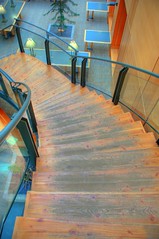 Except for the occasional vacation or trip to the hospital,
I've written on this blog most days since October 27, 2000 (and more
intermittently for three and a half years before that, before it was a
blog). Including this post, that's 3446 entries in 3152 days, or an
average of 1.09 posts per day, through raising our kids and work and
travel and illnesses and treatments galore.
Except for the occasional vacation or trip to the hospital,
I've written on this blog most days since October 27, 2000 (and more
intermittently for three and a half years before that, before it was a
blog). Including this post, that's 3446 entries in 3152 days, or an
average of 1.09 posts per day, through raising our kids and work and
travel and illnesses and treatments galore.For most of my life I've written compulsively. In the words of Tim Bray and Mark Pilgrim, I write this blog because I "can't not write." Or at least I did. But today it feels forced, an annoyance, something it should not be.
I need a break. So I'm taking one. I don't know how long.
I'll probably still post to Twitter and Facebook, but not as much. I'll be on email too, though I plan to unsubscribe from a lot of lists and notifications that clutter up my inbox, and maybe try to pare down the 1800 messages sitting there. There will be photos on Flickr. Maybe I'll find a way to bring some of that material over here automatically. We'll see.
Other things also won't change. I plan to continue co-hosting with Dave Chick the Inside Home Recording podcast once a month or so. I won't be offline or off the grid. If you subscribe to my RSS feed you'll see when something new appears here, whenever that might be. I'll let you know if there's any big news.
In the meantime, it's almost summer. Go outside. Be with your friends and family. Talk. Love. I plan to.
11 June 2009
Going beyond common sense
A few months ago, I posted two quotes about how science works, and why it's effective:
We evolved to get by and reproduce as hunter-gatherer primates on the savannah of Africa, not to follow two or more independent lines of evidence to confirm how fast the universe is expanding. Yet we have figured that out, because scientific thinking is designed to counteract our tendencies to fool ourselves. Sometimes we still do, for awhile, but science also tends to be self-correcting, because it tries to force reality to trump belief.
There's an excellent article in the current issue of the academic journal Evolution: Education and Outreach, titled "Understanding Natural Selection: Essential Concepts and Common Misconceptions" (via PZ Myers). Yes, it's academic and thus (for a web page) pretty long, but there's lots of meat there, and it's written for a general audience. It's worth reading through.
The first part summarizes how natural selection works. The second part asks "why is natural selection so difficult to understand?" After all, it is elegant and logical, and has mountains (literally, in some cases) of evidence behind it, collected and analyzed and correlated and compared and verified over 150 years. However:
Indeed, that's often not a bad place to start. Seeing that populations of organisms change over time, early evolutionary theorists proposed that the organisms changed, in effect, because they wanted to, and passed those desired changes on to their offspring. But those ideas had to be discarded when the evidence didn't support them. Similarly, long tradition indicates that many alternative medical therapies might be worth examining, but research shows that most of them don't work.
Intuition and common sense are a good way to find your way through day-to-day life, but they're not especially reliable when trying to figure out how reality works, and thus how to do things that are genuinely new.
The first principle is that you must not fool yourself—and you are the easiest person to fool. - Richard FeynmanFeynman and Gefter sum up what makes science different from many other intellectual pursuits, and why it has so radically changed the human experience over the past few hundred years. Not fooling ourselves turns out to be surprisingly difficult. That's because (to dig up another thing I write about frequently here) our brains aren't built to find the truth. Often, we have to work against our own thinking to do that.
If common sense were a reliable guide, we wouldn't need science in the first place. - Amanda Gefter
We evolved to get by and reproduce as hunter-gatherer primates on the savannah of Africa, not to follow two or more independent lines of evidence to confirm how fast the universe is expanding. Yet we have figured that out, because scientific thinking is designed to counteract our tendencies to fool ourselves. Sometimes we still do, for awhile, but science also tends to be self-correcting, because it tries to force reality to trump belief.
There's an excellent article in the current issue of the academic journal Evolution: Education and Outreach, titled "Understanding Natural Selection: Essential Concepts and Common Misconceptions" (via PZ Myers). Yes, it's academic and thus (for a web page) pretty long, but there's lots of meat there, and it's written for a general audience. It's worth reading through.
The first part summarizes how natural selection works. The second part asks "why is natural selection so difficult to understand?" After all, it is elegant and logical, and has mountains (literally, in some cases) of evidence behind it, collected and analyzed and correlated and compared and verified over 150 years. However:
Much of the human experience involves overcoming obstacles, achieving goals, and fulfilling needs. Not surprisingly, human psychology includes a powerful bias toward thoughts about the "purpose" or "function" of objects and behaviors [...] the "human function compunction." This bias is particularly strong in children, who are apt to see most of the world in terms of purpose; for example, even suggesting that "rocks are pointy to keep animals from sitting on them".In other words, one reason it's hard to understand natural selection (or quantum mechanics, or the weather, or geological time) is that we're predisposed to believe that the whole universe is like us.
Indeed, that's often not a bad place to start. Seeing that populations of organisms change over time, early evolutionary theorists proposed that the organisms changed, in effect, because they wanted to, and passed those desired changes on to their offspring. But those ideas had to be discarded when the evidence didn't support them. Similarly, long tradition indicates that many alternative medical therapies might be worth examining, but research shows that most of them don't work.
Intuition and common sense are a good way to find your way through day-to-day life, but they're not especially reliable when trying to figure out how reality works, and thus how to do things that are genuinely new.
10 June 2009
Camera Works: pictures that tell a story
Here are three photos I recently uploaded to my Flickr account, each with an accompanying story but otherwise unrelated. The first one shows the practical applications of knowing how your camera works, while the others are just for fun. Click each photo to zoom it:
Where is this? The fountain is on Birch Street between Broadway and 8th Avenue in Vancouver, if you want to visit it yourself. It's pretty cool: two streams flow down on either side of a set of steps. This is the north side.
We have chickadees raise babies in this birdhouse on our back porch every year. But this year this one bird (the mom?) looks especially beat-up and scraggly, and has looked that way for weeks. Is is just old, or did something nasty happen to it? Seems to be feeding the kids just fine, though.
I used a long focal length, higher ISO (sensitivity), and fast shutter speed (plus some patience) to get this series.
This photo required a flash, both because the room was a bit dim and because I wanted to highlight the glittery goodness of the unintentional Coke Zero slush.
Two waterfalls:
Actually, it's two photos of the same waterfall, taken a few seconds apart using my Nikon D50 digital SLR and a 50 mm lens, showing how you can change an image by controlling the aperture and shutter speed.- For blurry water: I snapped the left photo at f/22 (a small aperture) for 1/8 of a second, blurring the water with a long shutter speed. I didn't have a tripod, so I rested the camera against the edge of the fountain for stability.
- For frozen splashes: The right photo was at f/3.5 (a wider aperture) for 1/800 of a second, freezing the motion of the water with a short shutter speed. The camera was in the same place, but because of the fast shutter I didn't need to be so careful about not moving it.
Where is this? The fountain is on Birch Street between Broadway and 8th Avenue in Vancouver, if you want to visit it yourself. It's pretty cool: two streams flow down on either side of a set of steps. This is the north side.
Drama at the birdhouse:
This isn't quite as dramatic as it looks at first glance. While the photos are in the correct order, the chickadee didn't eat the wasp—it just scared the insect away, with food already in its mouth.We have chickadees raise babies in this birdhouse on our back porch every year. But this year this one bird (the mom?) looks especially beat-up and scraggly, and has looked that way for weeks. Is is just old, or did something nasty happen to it? Seems to be feeding the kids just fine, though.
I used a long focal length, higher ISO (sensitivity), and fast shutter speed (plus some patience) to get this series.
Exploded Coke Zero:
I guess our downstairs fridge was set a bit too cold. Good thing sugar acts as an antifreeze, so that it was the sugar-free (and non-sticky) Coke Zero that froze and exploded first. Still a bit of mess to clean up inside the fridge, though.This photo required a flash, both because the room was a bit dim and because I wanted to highlight the glittery goodness of the unintentional Coke Zero slush.
09 June 2009
Keep on keepin' on
That makes two consecutive CT scans showing my tumours to be stable. This drug may keep me around for awhile yet.
But man, these side effects. Just got back to bed after another hour and a half in the bathroom. There's always a price to be paid to stay alive, I guess.
But man, these side effects. Just got back to bed after another hour and a half in the bathroom. There's always a price to be paid to stay alive, I guess.
08 June 2009
I'll be on CBC Radio again at 5:40 today
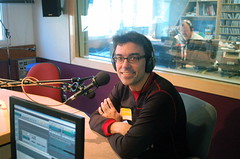 I'll be on the radio again, but it's not about cancer this time—I get to nerd out instead! This afternoon, CBC Radio Vancouver's "On the Coast" drivetime show will be talking about the City of New Westminster's feasibility study/pilot project to create a citywide Wi-Fi network (from the May 11 New West council meeting). I'll be on the panel by phone, not in the studio as in the photo.
I'll be on the radio again, but it's not about cancer this time—I get to nerd out instead! This afternoon, CBC Radio Vancouver's "On the Coast" drivetime show will be talking about the City of New Westminster's feasibility study/pilot project to create a citywide Wi-Fi network (from the May 11 New West council meeting). I'll be on the panel by phone, not in the studio as in the photo.UPDATE: Audio of my interview is now available at my podcast. You can also grab the MP3 file directly (2.3 MB).
The broadcast panel begins at 5:40 p.m. Pacific Time on 690 FM or 88.1 FM in Vancouver, or you can listen to it online. I'll try to record the stream and post the panel to my podcast shortly. Municipal Wi-Fi was a big idea a few years ago, but many of the utopian early predictions of free wireless service across big cities haven't panned out, and the rise of high-speed cellular data coverage (such as with the iPhone), more free hotspots in cafés and such, and commercial WiMAX networks like Rogers Portable Internet have made it seem a little less necessary.
If you have any thoughts about this topic that you think I should address on the air, leave a comment below, email me, or send me a message on Twitter in the next couple of hours and I'll see if I can incorporate your ideas.
Living for tomorrow
 Sometimes, for a few days, it's easy to forget how sick I am. But I found out I have cancer two and a half years ago, and I've been under some sort of treatment—chemotherapy, radiation, surgery, or recovering from those things—the whole time. Tomorrow I'll hear the results of my latest CT scan, good or bad. That will help determine what comes next.
Sometimes, for a few days, it's easy to forget how sick I am. But I found out I have cancer two and a half years ago, and I've been under some sort of treatment—chemotherapy, radiation, surgery, or recovering from those things—the whole time. Tomorrow I'll hear the results of my latest CT scan, good or bad. That will help determine what comes next.Last night I hardly slept. I was in the bathroom at least once an hour, sometimes several times, right through till 6:00 a.m., and luckily my wife Air was able to get up and make sure the kids got off to school, which is usually my job. Side effects of cediranib, my current medication, kept me up. They're hard to predict, so when I felt them coming on last night I had no idea whether they might clear out my intestines in an hour, or whether it would take all night. All night it was.
I will also note, without further comment, that the bag of popcorn I ate when I took the kids to the movies on Saturday was a very bad idea.
Now I'm awake, taking some Advil and hoping to recover enough to get out of the house sometime today. Before she went out to her appointments this morning, my wife put a second coat of varnish on our stairs. They look good, and there's a fan helping them to dry. We need milk and butter, the baby chickadees are growing in our birdhouse, I love my family. Life continues.
07 June 2009
Help find Daniel Hughes
UPDATE July 2009: Sadly, Daniel's remains were found on the lower slopes of Mt. Seymour in July, not too far from where he left his bicycle a few weeks earlier.
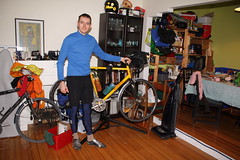 Daniel Hughes
is a friend of a friend, and he disappeared on the morning of Friday,
June 5. He is an enthusiastic bicyclist, and was apparently going for a
bike ride in Vancouver—but never came home.
Daniel Hughes
is a friend of a friend, and he disappeared on the morning of Friday,
June 5. He is an enthusiastic bicyclist, and was apparently going for a
bike ride in Vancouver—but never came home.
Here's a photo of him with his bicycle. If you see him or might have any information about what happened to him, please contact Vancouver Police. His family and friends are very worried about him.
 Daniel Hughes
is a friend of a friend, and he disappeared on the morning of Friday,
June 5. He is an enthusiastic bicyclist, and was apparently going for a
bike ride in Vancouver—but never came home.
Daniel Hughes
is a friend of a friend, and he disappeared on the morning of Friday,
June 5. He is an enthusiastic bicyclist, and was apparently going for a
bike ride in Vancouver—but never came home.Here's a photo of him with his bicycle. If you see him or might have any information about what happened to him, please contact Vancouver Police. His family and friends are very worried about him.
06 June 2009
Han Solo, P.I.
05 June 2009
Where the white things are
 Vancouver is a heavily multiethnic
city, and most of the time you see that wherever you go. But there are
some events—even ones that don't have a specific cultural or religious
focus—that slice our population into a demographic so narrow that if you
attended them, you'd think this place was a monoculture.
Vancouver is a heavily multiethnic
city, and most of the time you see that wherever you go. But there are
some events—even ones that don't have a specific cultural or religious
focus—that slice our population into a demographic so narrow that if you
attended them, you'd think this place was a monoculture.One of those was the Dane Cook comedy show that my wife and I attended last night. It was a fun evening, with three comedians mostly telling sex jokes. But holy crap, I don't know if I've ever seen so many white people in one place. Well over 10,000 fans at Vancouver's GM Place, and overwhelmingly it was young white boys with baseball caps, logo T-shirts, and plaid knee-length shorts; and girls of a similar age with long straight hair, spaghetti-strap tops, big sunglasses, and high heels or flip-flops. (The blazing hot weather outside surely contributed to the dress code.) We had to look long and hard to find the smattering of Asian, black, and Indian faces in the crowd. In Vancouver, that is damned weird.
Cook himself isn't the most laugh-out-loud comedian I've ever seen, but there's a mysterious appeal to his stage character, which is a sort of potty-mouthed Han Solo: roguish, handsome, kind of a prick, and yet strangely vulnerable and appreciative. He plays the same kinds of guys in his movies most of the time—the charming asshole best friend who likes to talk about his penis.
But back to the audience. While Cook is closer to my age (nearing 40), his fans skew very young. While there were a few of us approaching middle age, it was easier to spot a set of braces or the giddy emotions of someone whose prom dance might have been last week. And pretty much everyone completely ignored the three announcements that "cameras and recording devices are strictly prohibited." There were camera flashes and the orange glow of digicam and phonecam focus lights during the whole multi-hour show.
The concert brought back a memory of a very different event my wife and I attended about seven years ago. It was a show by Neil Finn (of Crowded House and Split Enz) at the Vogue Theatre, and while the crowd was almost as Caucasian, it was much smaller, and rather than young, everyone else was our age. It was a high-school reunion for the Class of 1986. Perhaps that's what a Dane Cook show will seem like in another 15 years too.
04 June 2009
The digital decline of Annie Leibovitz's photography
 Bad Astronomer Phil Plait likes the photography of Annie Leibovitz,
such as this ad photo for Louis Vuitton bags featuring astronauts Sally
Ride, Buzz Aldrin, and Jim Lovell. Despite her fame and the excellent
work she's done in the past, I find most of Leibovitz's current work
aesthetically repulsive.
Bad Astronomer Phil Plait likes the photography of Annie Leibovitz,
such as this ad photo for Louis Vuitton bags featuring astronauts Sally
Ride, Buzz Aldrin, and Jim Lovell. Despite her fame and the excellent
work she's done in the past, I find most of Leibovitz's current work
aesthetically repulsive.A bit of a rant here. Annie used to take good photos, and she still occasionally does, but her advertising work (including this picture) and many of her portraits long ago strayed much too far into over-Photoshopped territory. One critic even called a picture she created last year the worst photograph ever made, and I'm inclined to agree.
I think this would have been a much better photo with the same people, all of whom I admire, plus the same truck and the same bag, outside on a sunny day, maybe on the landing strip at Edwards Air Force Base. Maybe in black and white. The example here is overlit, over-processed, oversaturated, and ingenuine. Their facial expressions aren't that great. And yeah, if they're supposed to be looking at and lit by the Moon, it's in entirely the wrong place in the image. Even a non-nerd can probably detect that intuitively.
Compare her classic portrait of Whoopi Goldberg in the bath (11th down on this page) to her recent Photoshop monstrosity of Whoopi (second down on this page).
I admire surreal photography and well-executed photo manipulation, whether using Photoshop or high-dynamic-range (HDR) imaging. But Leibovitz isn't doing that. She and her team of assistants have manipulated the life out of her images. Much of her new stuff reminds me of velvet paintings of dogs playing poker. The astronaut ad is no exception.
03 June 2009
The rise and fall of General Motors
There's a lot of talk about why General Motors slid into bankruptcy protection this week, but I think you can summarize the situation with two of the company's old cars (photos from the 2009 New York Times GM Timeline):
Top left, the amazing and beautiful 1938 Buick Y-Job concept car prototype (not a beautiful name, but still...), driven by GM design head Harvey J. Earl. That car appeared as the world's first concept vehicle, as GM was ascending to its all-time high U.S. market share, which reached 54% in 1954. It heralded the beginning of artistic design in automobiles, which through the 1920s had looked purely functional and utilitarian.
Bottom right, the 1980 Chevrolet Citation, a front-wheel-drive response to smaller Japanese cars from Toyota, Honda, and Datsun. The Citation was a big red hunk of meh, which drove poorly and lost sales in each of its five years on the market. The 1980s saw GM and other American car makers creating poor imitations of more successful foreign design ideas. GM was by then descending into its current state.
Top left, the amazing and beautiful 1938 Buick Y-Job concept car prototype (not a beautiful name, but still...), driven by GM design head Harvey J. Earl. That car appeared as the world's first concept vehicle, as GM was ascending to its all-time high U.S. market share, which reached 54% in 1954. It heralded the beginning of artistic design in automobiles, which through the 1920s had looked purely functional and utilitarian.
Bottom right, the 1980 Chevrolet Citation, a front-wheel-drive response to smaller Japanese cars from Toyota, Honda, and Datsun. The Citation was a big red hunk of meh, which drove poorly and lost sales in each of its five years on the market. The 1980s saw GM and other American car makers creating poor imitations of more successful foreign design ideas. GM was by then descending into its current state.
02 June 2009
Those damned angry atheists
Christopher Hitchens was his usual bombastic and arrogant self on CBC's "Q" today (MP3 file). That's no surprise, since he is perhaps the angriest—or at least the most provocative—of the angry New Atheists
who have had bestselling books over the past few years. Many religious
people, and a good number of my fellow atheists too, think Hitchens's
take-no-prisoners approach is wrong and counterproductive. Why, they
ask, should atheists antagonize believers the way he and others, like Richard Dawkins, do?
"Q" host Jian Ghomeshi asked Hitchens a similar question today:
The angry New Atheists are like the activist vanguard of the LGBT rights movement, and of other civil rights movements before it. Not every gay person wants to march in protests, or make films outing hypocritical homosexual politicians. But the demands and self-righteousness of the vanguard are why same-sex marriage is a reality in Canada, and in several European countries and American states, today, rather than decades from now.
I grew up in an ostensibly secular Canada in the '70s, but we still said a prayer every morning in public school, and the Lord's Day Act prevented stores from opening on Sunday. Those rituals didn't offend me at the time, but as a non-religious youngster, I still felt like an outsider. The assumption seemed to be not only that everyone was religious, but that we were all Christians too. That has changed, largely because of Canada's increasing multiculturality.
High-profile writers like Hitchens and Salman Rushdie and Douglas Adams and Barbara Ehrenreich; scientists like Richard Dawkins and David Suzuki and Richard Feynman; comedians like Julia Sweeney and Ricky Gervais and George Carlin; musicians like Ani DiFranco and Mick Jagger and Eddie Vedder; actors like Omar Sharif and Eva Green and Emma Thompson and Ian McKellen and Katharine Hepburn; and others from Penn and Teller to Linus Torvalds to the MythBusters to Nigella Lawson—around the world, all profess their atheism.
In doing so, they affirm that the non-religious and non-spiritual among us are part of the full and honourable diversity of human society. So the audience for Christopher Hitchens need not be religious people he is trying to de-convert (even if that is his goal). Rather, it can be the millions of us who believe in no gods or spirits, and who are comfortable saying so, because Hitchens is shouting it too.
UPDATE: Biologist Jerry Coyne, who is outspoken in his assertion that science and religion are incompatible, has an interesting post on this same topic.
"Q" host Jian Ghomeshi asked Hitchens a similar question today:
Tell me who you think your audience is, because you're quite aggressive with your argument. [...] If you really want to change things, it might take some effort to overcome organized religion in the world, but I'm wondering if [...] being a little softer in your approach might be more effective?It's true that most atheists would prefer to be more conciliatory towards the world's religious majorities. But I think Hitchens and his compatriots serve a valuable purpose. With their polemics, their public profiles, indeed with their anger, they have made atheism visible in this new century, especially in America. Without them, we might not have heard Barack Obama's acknowledgment of non-believers in his inaugural address.
The angry New Atheists are like the activist vanguard of the LGBT rights movement, and of other civil rights movements before it. Not every gay person wants to march in protests, or make films outing hypocritical homosexual politicians. But the demands and self-righteousness of the vanguard are why same-sex marriage is a reality in Canada, and in several European countries and American states, today, rather than decades from now.
I grew up in an ostensibly secular Canada in the '70s, but we still said a prayer every morning in public school, and the Lord's Day Act prevented stores from opening on Sunday. Those rituals didn't offend me at the time, but as a non-religious youngster, I still felt like an outsider. The assumption seemed to be not only that everyone was religious, but that we were all Christians too. That has changed, largely because of Canada's increasing multiculturality.
High-profile writers like Hitchens and Salman Rushdie and Douglas Adams and Barbara Ehrenreich; scientists like Richard Dawkins and David Suzuki and Richard Feynman; comedians like Julia Sweeney and Ricky Gervais and George Carlin; musicians like Ani DiFranco and Mick Jagger and Eddie Vedder; actors like Omar Sharif and Eva Green and Emma Thompson and Ian McKellen and Katharine Hepburn; and others from Penn and Teller to Linus Torvalds to the MythBusters to Nigella Lawson—around the world, all profess their atheism.
In doing so, they affirm that the non-religious and non-spiritual among us are part of the full and honourable diversity of human society. So the audience for Christopher Hitchens need not be religious people he is trying to de-convert (even if that is his goal). Rather, it can be the millions of us who believe in no gods or spirits, and who are comfortable saying so, because Hitchens is shouting it too.
UPDATE: Biologist Jerry Coyne, who is outspoken in his assertion that science and religion are incompatible, has an interesting post on this same topic.
01 June 2009
Search Engine moves to TVO
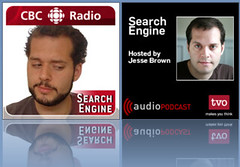 Last year, I wrote about CBC's two radio tech shows, "Spark" and "Search Engine",
and how they were sometimes hard to tell apart. CBC management felt the
same—"Search Engine" was downgraded from a full radio show to a podcast only last year, and recently got cancelled altogether, despite being one of the network's most popular podcasts.
Last year, I wrote about CBC's two radio tech shows, "Spark" and "Search Engine",
and how they were sometimes hard to tell apart. CBC management felt the
same—"Search Engine" was downgraded from a full radio show to a podcast only last year, and recently got cancelled altogether, despite being one of the network's most popular podcasts.Fortunately, TVOntario picked it up, and host Jesse Brown has now put out two episodes at the podcast's new home. (You can subscribe using the RSS feed or at iTunes.) The Facebook group stays the same, with the new name. If you were a "Search Engine" listener before, I encourage you to subscribe at the new feed.
And I do have to say, Brown's new clean-shaven look is a big improvement over his old scruffy '70s rock star beard.
P.S. "Spark," to which I've occasionally contributed, continues on at CBC, and is growing from a half-hour show to a full hour on the radio in the fall.

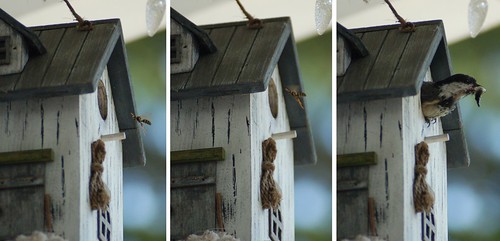
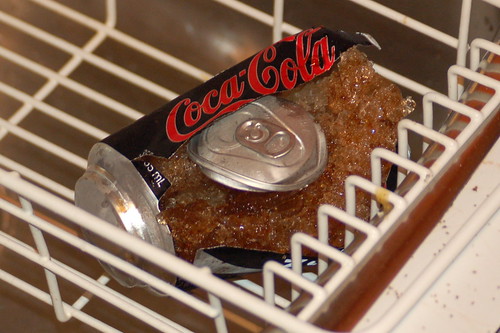
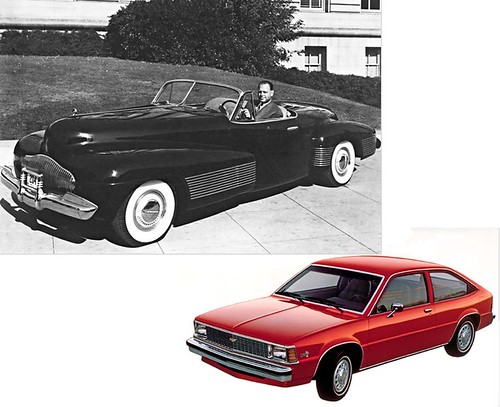
No comments:
Post a Comment